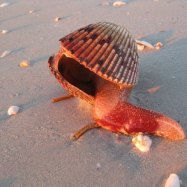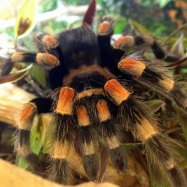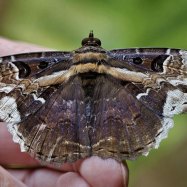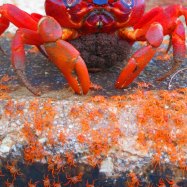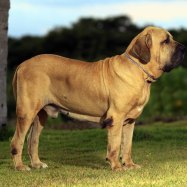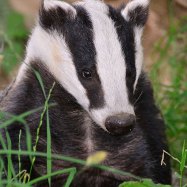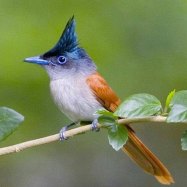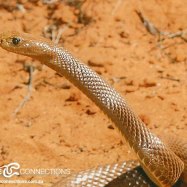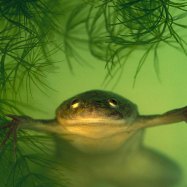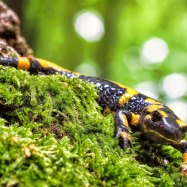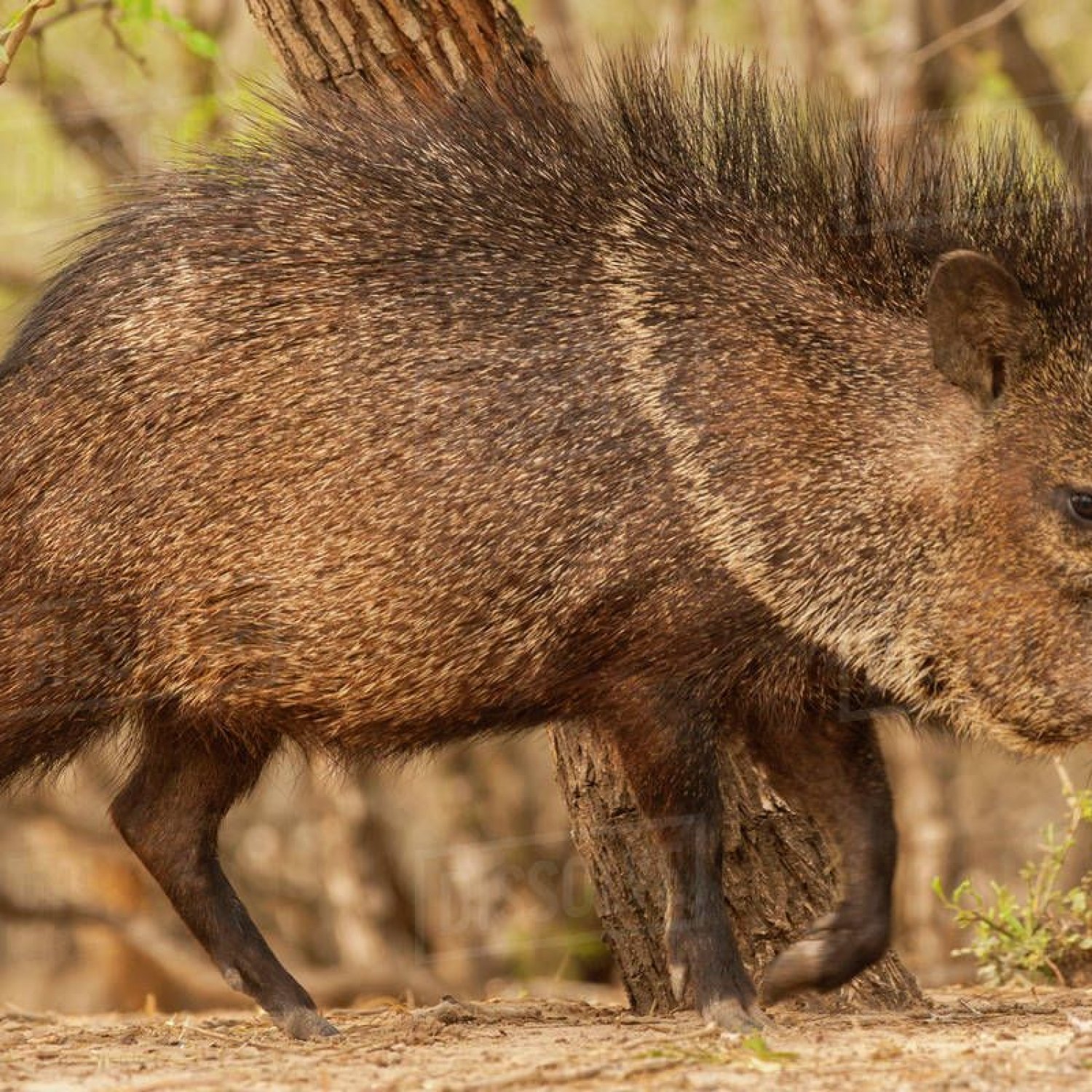
Collared Peccary
90 to 130 cm
The Collared Peccary, also known as the javelina, is a unique animal found in various regions of the Americas. With a stocky and compact body shape, this member of the Tayassuidae family can reach lengths of 90 to 130 cm. They are omnivorous and known for their collared appearance, making them a fascinating addition to any wildlife sighting.
Animal Details Summary:
Common Name: Collared Peccary
Kingdom: Animalia
Habitat: Forests, deserts, grasslands
The Fascinating and Misunderstood Collared Peccary: The Wild Pig of the Americas
As you take a walk through the dense forests, deserts, or grasslands of the Americas, you may come across an interesting creature with a striking appearance - the Collared Peccary. With their stocky build, grey to black coloration, and a distinctive white collar across their shoulders, these animals are hard to miss.But beyond their unique appearance, these fascinating creatures have a rich history and play a crucial role in their environment. Let's dive deeper into the world of the Collared Peccary and uncover why they are a truly unique and misunderstood species Collared Peccary.
The Basics: What is a Collared Peccary?
Scientifically known as Pecari tajacu, the Collared Peccary is a mammal belonging to the order Artiodactyla. They are commonly known as the Collared Peccary, White-lipped Peccary, or Javelina. They are found in various regions of the Americas, including North, Central, and South America, making them a prominent species in the New World.The Collared Peccary belongs to the family Tayassuidae, which are hoofed mammals closely related to pigs and warthogs. However, they are classified as a separate family because of their distinct cranial anatomy and tooth structure.
They have a stocky and compact body shape, with males typically being larger than females. A full-grown adult can reach a length of 90 to 130 cm and weigh between 16 to 27 kg. Their coat ranges from gray to black, with a white band across their shoulders that gives them their distinctive "collared" appearance.
The Unique Habitat and Distribution of Collared Peccaries
The Collared Peccaries are incredibly adaptable animals that can thrive in a variety of habitats Coachwhip Snake. They are commonly found in forests, deserts, and grasslands, making them one of the few species that can survive in both wet and dry environments.Their range extends from the southwestern United States to parts of northern Argentina, covering various countries in North, Central, and South America. In the United States, they are primarily found in Texas, Oklahoma, Arizona, and New Mexico. However, their overall population has significantly decreased in the United States over time, making them a rare sight in some areas.
These animals form groups called herds or bands, consisting of 3 to 20 individuals. They are highly social animals and are known to communicate with each other through vocalizations, body language, and scent marking. In these herds, the females are the dominant ones and have a strong hierarchy, while males tend to be solitary.
The Feeding Habits of the Collared Peccary
Collared Peccaries are omnivorous animals, meaning they eat both plants and animals. They have a varied diet that includes fruits, nuts, berries, seeds, insects, small reptiles, and even carrion. This diversity in their diet makes them a crucial part of their ecosystem, as they help with seed dispersal and keeping insect populations in check.What is fascinating about Collared Peccaries is their ability to adapt to their ever-changing environment. In dry and arid regions, they have a keen sense of smell, which helps them locate water sources and succulent plants. They also have specialized stomachs that allow them to digest tough plant material, making them able to survive in areas with sparse vegetation.
The Essential Role of Collared Peccaries in Their Ecosystem
Collared Peccaries play a vital role in maintaining a balanced ecosystem in the regions they inhabit. As they move and forage for food, they create pathways in dense vegetation, which not only benefits themselves but also other species. These pathways provide easier access to food and water for other animals, such as birds, reptiles, and smaller mammals.Additionally, Collared Peccaries help with seed dispersal by consuming fruits and spreading the seeds throughout their environment. This process helps maintain plant diversity and ensures the survival of various plant species.
Unfortunately, due to their declining population in some areas, the impact of their absence can have detrimental effects on their surroundings. In areas where Collared Peccaries are no longer present, there is evidence that plants may become overgrazed, disrupting the natural balance of the ecosystem.
A Misunderstood Species
The Collared Peccary has long been a misunderstood and often overlooked species. Due to the similarity in their appearance to pigs and warthogs, they are often mistaken and labeled as wild pigs. However, this assumption is far from the truth, as Collared Peccaries have unique characteristics that set them apart from pigs and warthogs.One of the most significant misconceptions about Collared Peccaries is their aggressive nature. Despite their intimidating appearance, Collared Peccaries are not aggressive animals and do not pose any threat to humans. They are timid creatures and will only defend themselves when they feel threatened or are protecting their herd.
Another common misunderstanding is that they are destructive animals. While Collared Peccaries may cause damage to private property or crops, it is often a result of habitat destruction, pushing them into residential areas and farms in search of food.
The Threats to Collared Peccaries
According to the International Union for Conservation of Nature (IUCN), the Collared Peccary is listed as "Least Concern" on the Red List of Threatened Species, meaning their population is stable and not at risk. However, this does not mean that all is well for these animals.In the United States, the population of Collared Peccaries has been steadily declining due to several factors, including habitat loss, hunting, and extermination efforts. In some areas, Collared Peccaries are considered pests and are actively hunted, leading to a decrease in their population.
Another significant threat to Collared Peccaries is habitat destruction. The expansion of urban areas and agricultural land has resulted in the loss of their natural habitat. This not only forces them to adapt to new environments but also leads to increased encounters with humans, which can often be detrimental to the animals.
The Conservation Efforts for Collared Peccaries
Despite the threats they face, there have been efforts to conserve the Collared Peccary population in the United States. In areas where they are hunted, there are strict regulations to control the number of animals that can be taken, and hunting seasons are limited.Conservation organizations are also working to educate the public about the importance of Collared Peccaries in their environment, and efforts are being made to preserve and protect their natural habitat. Some measures include reforestation and creating protected areas for these animals to thrive.
The Importance of Protecting the Collared Peccary
As we have seen, Collared Peccaries play a crucial role in their ecosystem, and their presence is vital for maintaining a healthy and balanced environment. They are a unique and fascinating species that deserve to be protected and appreciated.By understanding their behaviors, habitat, and the threats they face, we can work towards conserving and preserving this species for generations to come. It is essential to educate ourselves and others about the importance of these animals and their role in the ecosystem. Only then can we ensure the survival of the Collared Peccary and the delicate balance of our environment.
The Fascinating Collared Peccary: A Misunderstood Creature in Need of Protection
In conclusion, the Collared Peccary is a truly remarkable and often overlooked species. From their unique appearance to their vital role in their ecosystem, these animals are a significant part of the Americas' biodiversity. It is crucial to understand and appreciate these creatures to protect them and ensure their survival. By working together, we can ensure a future where the Collared Peccary continues to roam freely in the forests, deserts, and grasslands of the Americas.

Collared Peccary
Animal Details Collared Peccary - Scientific Name: Pecari tajacu
- Category: Animals C
- Scientific Name: Pecari tajacu
- Common Name: Collared Peccary
- Kingdom: Animalia
- Phylum: Chordata
- Class: Mammalia
- Order: Artiodactyla
- Family: Tayassuidae
- Habitat: Forests, deserts, grasslands
- Feeding Method: Omnivorous
- Geographical Distribution: North, Central, and South America
- Country of Origin: United States, Mexico, Central America, South America
- Location: Various regions of the Americas
- Animal Coloration: Gray to black with a white band across the shoulders
- Body Shape: Stocky and compact
- Length: 90 to 130 cm
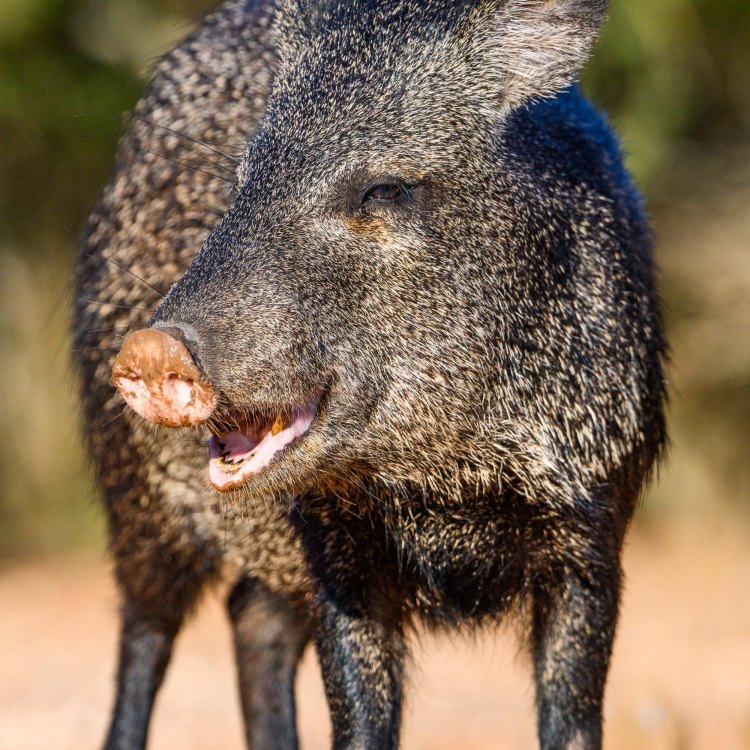
Collared Peccary
- Adult Size: 40 to 60 kg
- Average Lifespan: 8 to 12 years
- Reproduction: Sexual
- Reproductive Behavior: Monogamous
- Sound or Call: Loud vocalizations and grunting
- Migration Pattern: Non-migratory
- Social Groups: Herds
- Behavior: Diurnal and social
- Threats: Habitat loss and hunting
- Conservation Status: Least Concern
- Impact on Ecosystem: Seed dispersers
- Human Use: Hunting and meat consumption
- Distinctive Features: Sharp canines and scent glands
- Interesting Facts: They are also known as javelinas
- Predator: Large carnivores such as jaguars and pumas
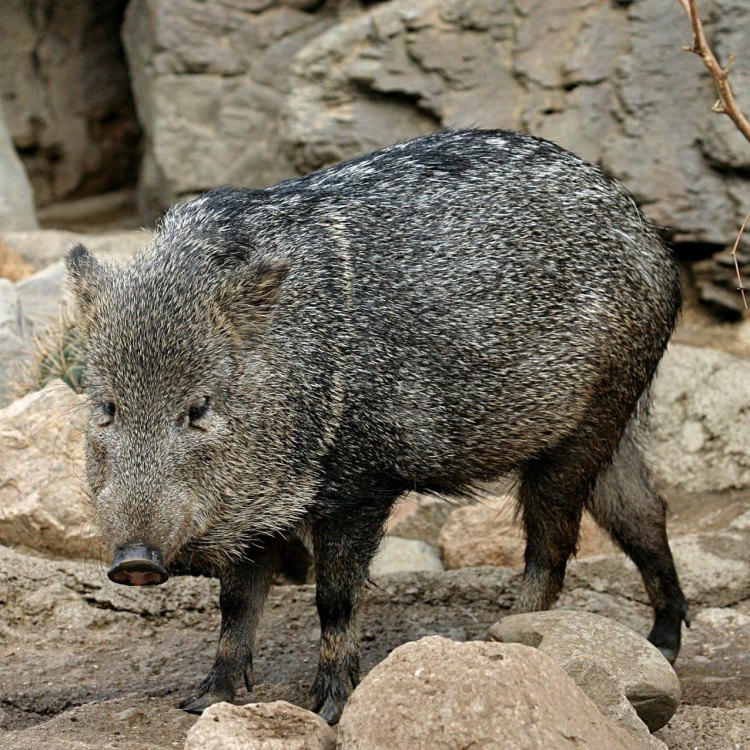
Pecari tajacu
Exploring the Fascinating World of Collared Peccaries
The animal kingdom is filled with a diverse range of creatures, from tiny insects to large beasts, each with their own unique characteristics and behaviors. One such intriguing species is the collared peccary, also known as javelina, found in the southwestern United States, Central America, and parts of South America. These stout and sturdy animals have captured the interest of many, including scientists, conservationists, and even hunters.In this article, we will delve into the world of collared peccaries to uncover their distinctive features, reproduction habits, social behavior, and their impact on the ecosystem PeaceOfAnimals.Com. So, buckle up and get ready to explore this fascinating and lesser-known species.
The Basics: Adult Size and Average Lifespan
The collared peccary is a medium-sized mammal, weighing between 40 to 60 kilograms and standing at about 60 to 70 centimeters tall. They have a stocky build, with short and muscular legs, making them excellent runners. Their body is covered in coarse and wiry hair, which ranges from brown to black in color. They have a distinctive white collar of hair around their neck, giving them the name "collared" peccary.In the wild, collared peccaries have an average lifespan of 8 to 12 years. However, in captivity, they can live up to 20 years. The difference in lifespan is due to the availability of resources and protection from predators in captivity.
Reproduction: A Sexual and Monogamous Species
Collared peccaries are sexual animals, with males and females coming together to mate during the breeding season Catahoula Leopard. They are monogamous, meaning they form a pair bond and stay together for life. During the breeding season, the males will become more vocal and territorial to attract females. Once a pair has formed, they will engage in various behaviors, such as grooming, foraging, and vocalizing, to strengthen their bond.The females have a gestation period of about 140 days, after which they give birth to 1 to 4 offspring, known as piglets. The piglets are precocial, meaning they are born fully developed and can walk and run within hours of birth. The mothers will nurse their young for about 3 months before they are weaned.
Unique Sounds and Herd Behavior
Collared peccaries are known for their loud vocalizations and grunts, which they use to communicate with each other. Their vocal repertoire also includes a series of calls that they use during mating and territorial disputes. The sound of collared peccaries is often described as a cross between a pig and a dog, making it distinct and easily recognizable.These social animals are diurnal, meaning they are most active during the day. They are also highly social, living in herds of up to 15 individuals, with a dominant male leading the group. Within the herd, there is a clear hierarchy, with each individual having a specific role to play, such as foraging, keeping watch, or caring for the young.
Threats and Conservation Status
The collared peccary's biggest threat is habitat loss due to human activity, such as agriculture and urbanization. As their natural habitat decreases, their food sources become scarce, and they are forced to venture into human settlements, leading to human-wildlife conflicts. In some areas, they are also hunted for their meat, which is considered a delicacy in some cultures.Despite these threats, the collared peccary is not considered endangered, with its conservation status listed as "Least Concern" by the International Union for Conservation of Nature (IUCN). However, conservation efforts are still necessary to protect and preserve their habitats and ensure their survival in the wild.
Impact on the Ecosystem: Seed Dispersers
As with many species in the animal kingdom, collared peccaries play a crucial role in their ecosystem. They are seed dispersers, meaning they help to spread plant seeds throughout their habitat as they forage for food. This behavior allows for the growth of new plants, which in turn, contributes to the overall health and diversity of the ecosystem.Apart from being seed dispersers, collared peccaries also contribute to nutrient cycling in the soil through their diggings and feces. They also play a role in controlling insect populations, as they feed on a variety of insects.
Human Use: Hunting and Meat Consumption
Collared peccaries have been hunted and consumed by humans for centuries, with evidence of their remains found in archaeological sites dating back to thousands of years. In some cultures, they are a traditional food source, and hunting them is still practiced in some areas.Today, hunting collared peccaries is regulated to ensure sustainable use and prevent their population from declining. However, illegal hunting and poaching are still a threat to their numbers, and conservation efforts to protect these animals are essential.
Distinctive Features: Sharp Canines and Scent Glands
One of the most distinctive features of collared peccaries is their sharp canines, which they use for defense and to forage for food. These canines are continuously growing, and the peccaries will often sharpen them by rubbing them against each other.Another distinct feature is their scent glands, located on their rump. These glands produce a strong musky scent that the peccaries use to communicate with each other and mark their territories.
Interesting Facts: They are also known as Javelinas
Aside from their scientific name, Tayassu tajacu, collared peccaries are also known by several other names, such as javelina, musk hog, skunk pig, and Texas peccary. The name javelina comes from the Spanish word "jabali," meaning wild boar, while musk hog and skunk pig refer to their distinct musky odor.Interestingly, despite their pig-like appearance, collared peccaries are not related to pigs. They belong to the Tayassuidae family, which includes other species such as white-lipped peccaries and Chacoan peccaries.
Predators: Large Carnivores
Collared peccaries are preyed upon by large carnivores, such as jaguars, pumas, and even humans. Their natural defense mechanism is to flee or form a defensive group, using their sharp canines to ward off predators. However, with habitat loss and fragmentation, their chances of survival against these predators decrease.In Conclusion
The collared peccary may not be as well-known as other iconic species, such as lions or elephants, but they play a vital role in their ecosystem. With their distinctive features, social behavior, and impact on the environment, these animals deserve our attention and protection. As we continue to learn more about these fascinating creatures, it is our responsibility to ensure their conservation for future generations to come.
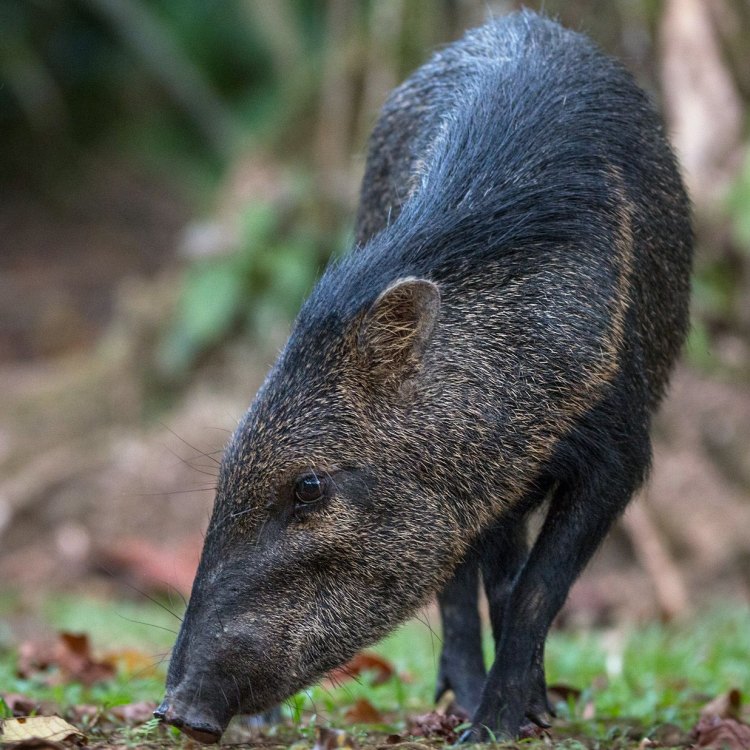
The Fascinating and Misunderstood Collared Peccary: The Wild Pig of the Americas
Disclaimer: The content provided is for informational purposes only. We cannot guarantee the accuracy of the information on this page 100%. All information provided here may change without prior notice.


